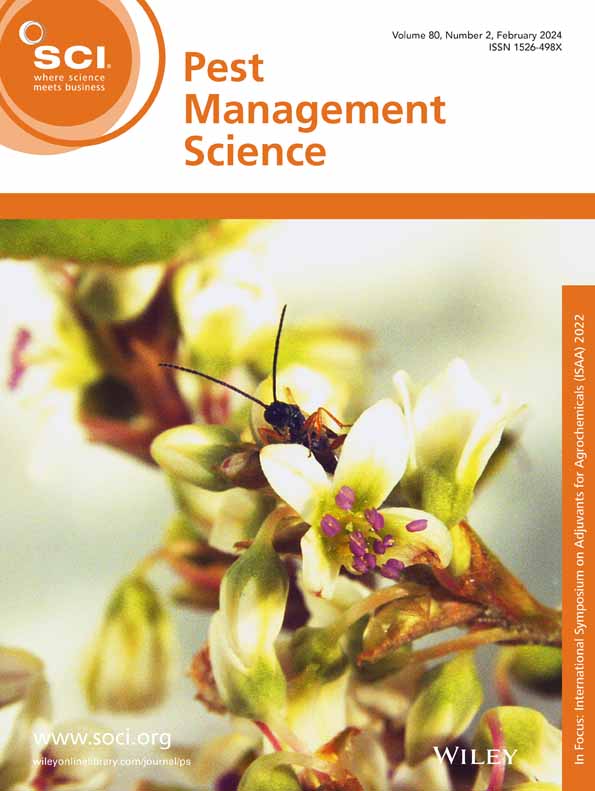The influence of crop type on pesticide wash-off parameters for use in environmental fate modelling
Abstract
BACKGROUND
Wash-off of plant protection products from crops is represented in current European Union (EU) surface water models and future EU soil models by a coefficient that estimates its contribution to soil loadings following rainfall. Replacing the default coefficient with experimental data requires a harmonized protocol and this research forms part of the development of such a protocol. Following a successful test of the proposed protocol on a single crop across eight laboratories, a range of crops were tested in a single laboratory to assess the impact of crop type on the results.
RESULTS
Six crops (wheat, rice, oil seed rape, cabbage, potato and French bean) were chosen, encompassing both hydrophobic and hydrophilic leaf surfaces. Tebuconazole (Folicur EW 250) was sprayed onto plants at a rate equivalent to 100 g ai ha−1 and subjected to a 1-h simulated rainfall event at an intensity of 20 mm h−1. Measured residues before and after rainfall were compared to calculate the percentage wash-off. The extent of wash-off was 66.4% with a 95% confidence interval of ±18.5% and the results were clustered according to leaf wettability, with lower wash-off in hydrophobic crops than in hydrophilic crops.
CONCLUSION
Wash-off of this unoptimized formulation was similar across the crops, despite the use of crops with both hydrophobic and hydrophilic leaf surfaces. There is potential, therefore, to rationalize the number of crops used in future studies by selecting a small number of hydrophilic and/or hydrophobic crops to obtain a robust estimation of the extent of wash-off for use in environmental fate models. © 2024 Society of Chemical Industry.



 求助内容:
求助内容: 应助结果提醒方式:
应助结果提醒方式:


